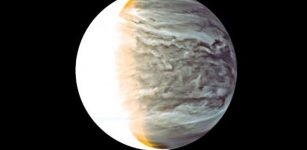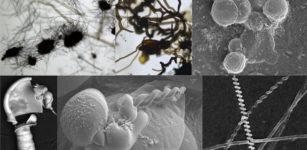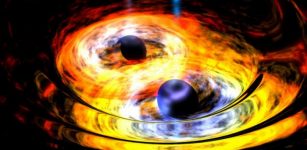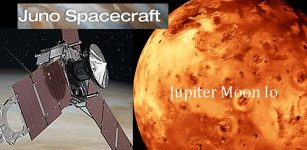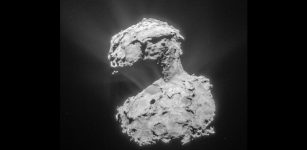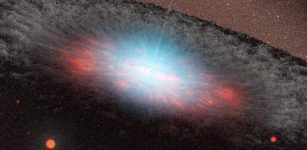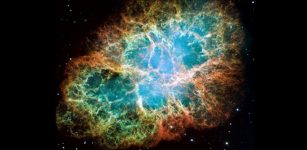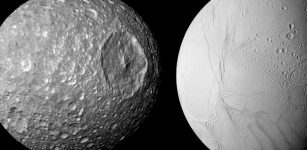Earth Is Not Unique – Earth-Like Planets May Be Common
Eddie Gonzales Jr. – MessageToEagle.com – Our planet is not unique and Earth-like planets may be common in the universe, a new UCLA study implies.
“We have just raised the probability that many rocky planets are like the Earth, and there’s a very large number of rocky planets in the universe,” co-author Edward Young, UCLA professor of geochemistry and cosmochemistry, said in a press release.
 An artist’s rendering shows a white dwarf star with a planet in the upper right. Credit: Mark Garlick
An artist’s rendering shows a white dwarf star with a planet in the upper right. Credit: Mark Garlick
The scientists led by Alexandra Doyle, a UCLA graduate student of geochemistry and astrochemistry, developed a new method to analyze in detail the geochemistry of planets outside of our solar system. Doyle did so by analyzing the elements in rocks from asteroids or rocky planet fragments that orbited six white dwarf stars.
White dwarf stars are dense, burned-out remnants of normal stars. Their strong gravitational pull causes heavy elements like carbon, oxygen and nitrogen to sink rapidly into their interiors, where the heavy elements cannot be detected by telescopes. The closest white dwarf star Doyle studied is about 200 light-years from Earth and the farthest is 665 light-years away.
“By observing these white dwarfs and the elements present in their atmosphere, we are observing the elements that are in the body that orbited the white dwarf,” Doyle said. The white dwarf’s large gravitational pull shreds the asteroid or planet fragment that is orbiting it, and the material falls onto the white dwarf, she said. “Observing a white dwarf is like doing an autopsy on the contents of what it has gobbled in its solar system.”
“If I were to just look at a white dwarf star, I would expect to see hydrogen and helium,” Doyle said. “But in these data, I also see other materials, such as silicon, magnesium, carbon and oxygen — material that accreted onto the white dwarfs from bodies that were orbiting them.”
When iron is oxidized, it shares its electrons with oxygen, forming a chemical bond between them, Young said.
“This is called oxidation, and you can see it when metal turns into rust,” he said. “Oxygen steals electrons from iron, producing iron oxide rather than iron metal. We measured the amount of iron that got oxidized in these rocks that hit the white dwarf. We studied how much the metal rusts.”
Rocks from the Earth, Mars and elsewhere in our solar system are similar in their chemical composition and contain a surprisingly high level of oxidized iron, Young said. “We measured the amount of iron that got oxidized in these rocks that hit the white dwarf,” he said.
The sun is made mostly of hydrogen, which does the opposite of oxidizing — hydrogen adds electrons.
“All the chemistry that happens on the surface of the Earth can ultimately be traced back to the oxidation state of the planet,” Young said. “The fact that we have oceans and all the ingredients necessary for life can be traced back to the planet being oxidized as it is. The rocks control the chemistry.”
Until now, scientists have not known in any detail whether the chemistry of rocky exoplanets is similar to or very different from that of the Earth.
How similar are the rocks the UCLA team analyzed to rocks from the Earth and Mars?
“Very similar,” Doyle said. “They are Earth-like and Mars-like in terms of their oxidized iron. We’re finding that rocks are rocks everywhere, with very similar geophysics and geochemistry.”
Read more – here
Written by Eddie Gonzales Jr. – MessageToEagle.com Staff

